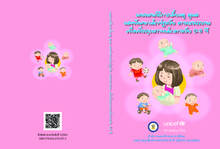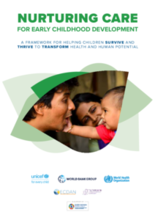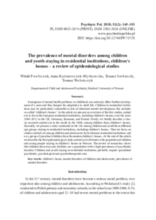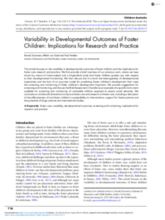Displaying 221 - 230 of 496
The guidelines provide information for ECD professionals and parents about holistic child development, linked to the national Early Learning and Development Standards.
This paper aims at describing how caregivers at an institution for motherless infants in rural Tanzania perceive infancy, caring and sensitivity in their everyday context.
Through this study, data were collected through interviews with 23 care leavers in Ghana to examine their challenges and the factors that influence their coping mechanisms.
This 5-minute video from the Center on the Developing Child at Harvard University explores the development and use of core capabilities — known as executive function and self-regulation skills — from early childhood into adolescence and adulthood.
The first online consultation on the Nurturing Care Framework for early childhood development was held between 24th January and 6th February, a summary of the responses submitted will be available in March.
The Nourished and Thriving Children toolkit was designed by SPOON to build capacity among the foster care community in feeding and nutrition topics so that they are equipped to address challenges commonly experienced by foster children.
This exploratory paper’s purpose is to determine the effect of demographic, risk, and protective factors on social-emotional development, as measured by the Ages and Stages Questionnaire Social Emotional (ASQ:SE), in children age 8 months to 5 years in out-of-home care in Ontario, Canada.
The Nurturing Care Framework provides a roadmap for action. It builds on state-of-the-art evidence about how early childhood development unfolds and how it can be improved by policies and interventions.
This article presents an overview of the few studies carried out so far in the European residential institutions, including children’s homes, over the years 1940–2011 in the UK, Germany, Romania, and Poland.
This article focuses on the variability in developmental outcomes of foster children and the implications for foster care research and practice.




